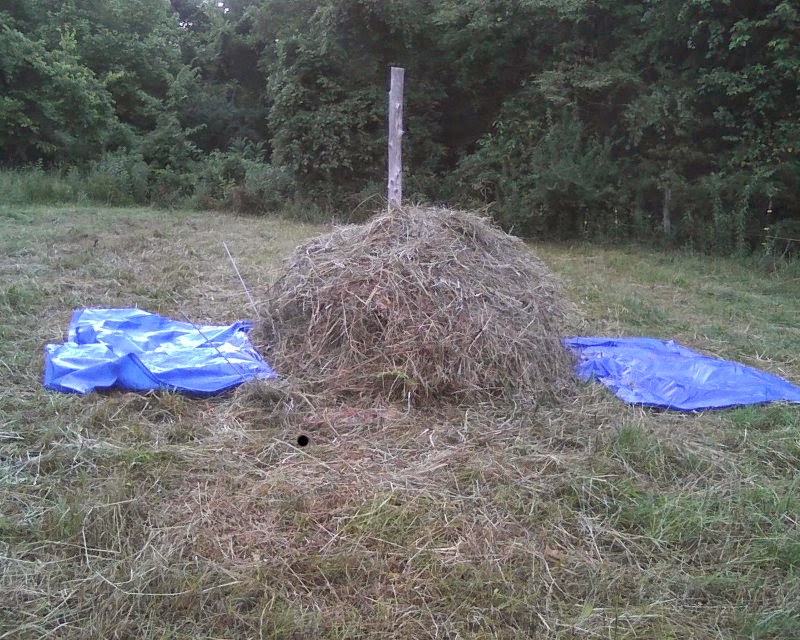A bit of followup on my post from 15 May, delayed by mainly being too busy. If these posts sketchily encapsulating our first cutting are too-off-topic, I won't be offended if they are removed, but they were all cut with a scythe. In fact the only "power" used is a bit of gas to pull the cart we haul in, and I thought people might like to see some more pictures (when I could think to take them  ).
).
In May we did a little over half the "new hay" in the front yard. Here is roughly 20 swaths consolidated into large windrows:

Once picked up, the hay is stacked in a breezy old trailer rainproofed (more or less) with a tarp, then stored/cured for baling day. No picture of the trailer, but a batch of bales from the "yard hay"; the quality of the grass is marginal in my opinion, but there is enough clover to make it worthwhile. I think the part of the yard we cut supplied 30 small (custom sized ~1/2 volume/weight of good-sized mechanically baled "small square bales"):

The baler was a "prototype" that we've used for several hundred bales now...
In May we did a little over half the "new hay" in the front yard. Here is roughly 20 swaths consolidated into large windrows:

Once picked up, the hay is stacked in a breezy old trailer rainproofed (more or less) with a tarp, then stored/cured for baling day. No picture of the trailer, but a batch of bales from the "yard hay"; the quality of the grass is marginal in my opinion, but there is enough clover to make it worthwhile. I think the part of the yard we cut supplied 30 small (custom sized ~1/2 volume/weight of good-sized mechanically baled "small square bales"):

The baler was a "prototype" that we've used for several hundred bales now...








